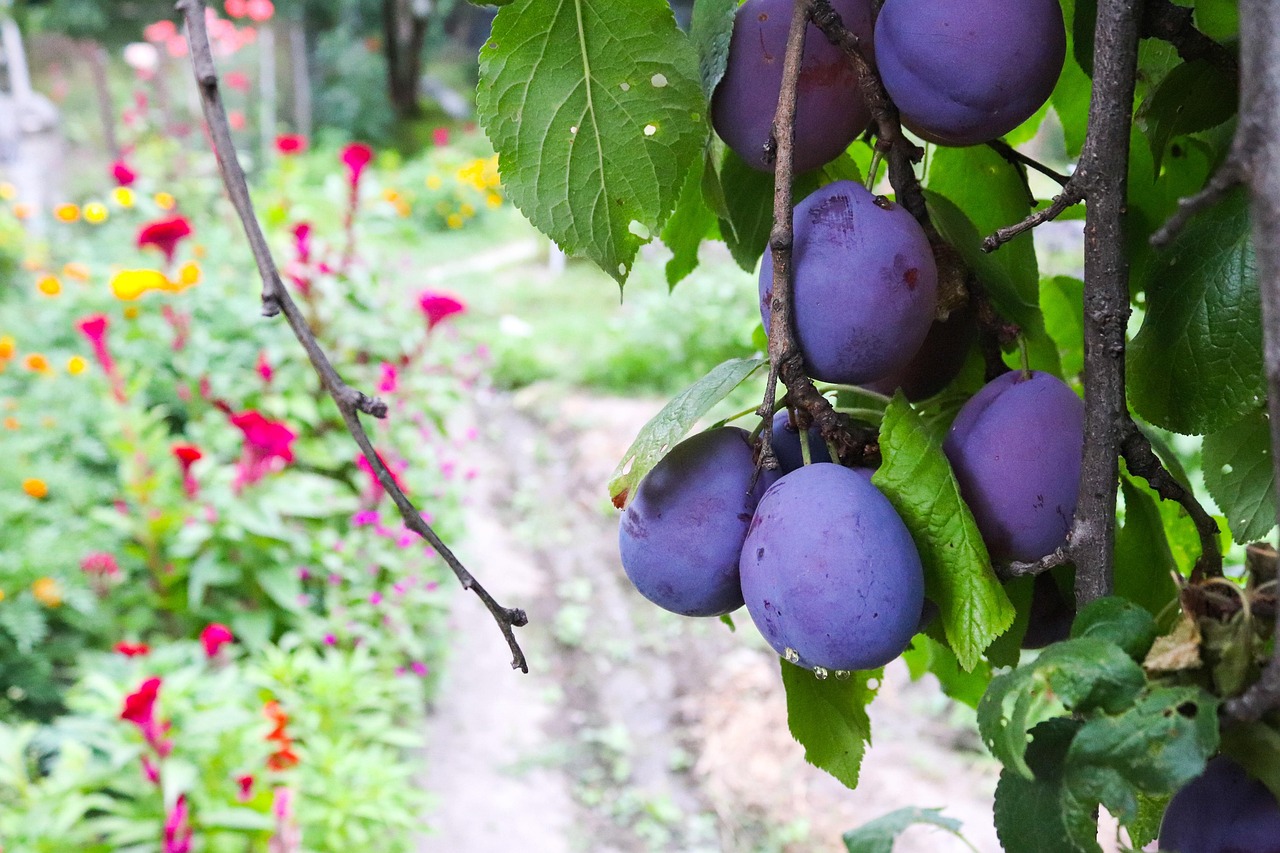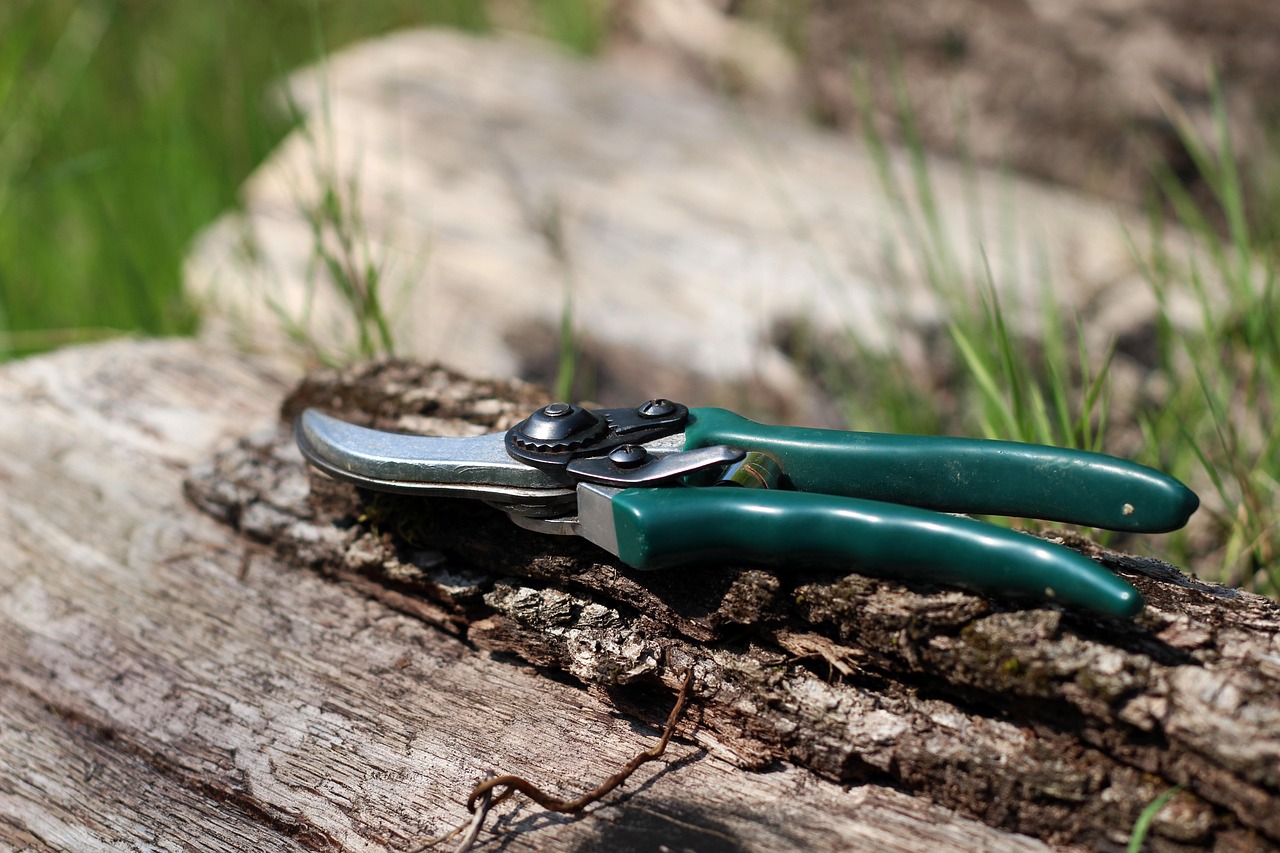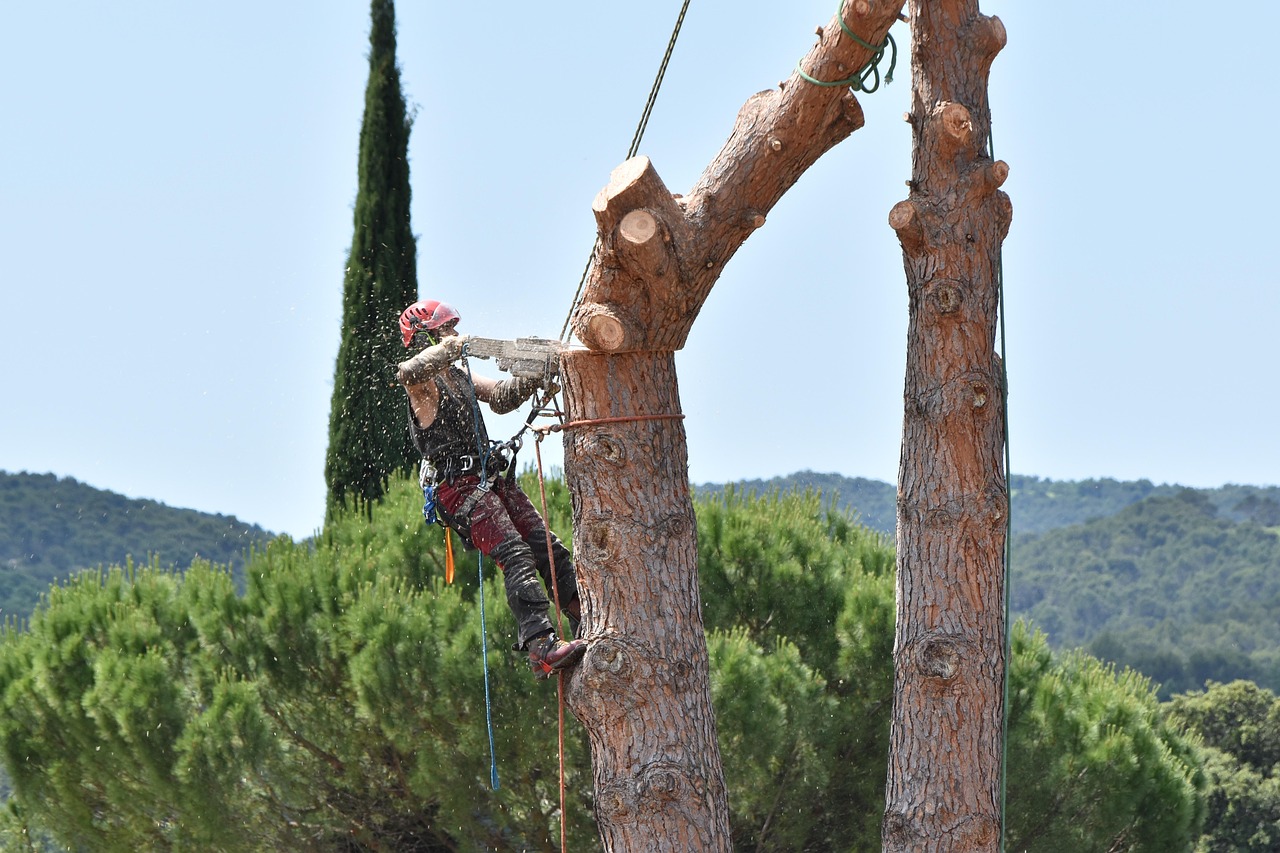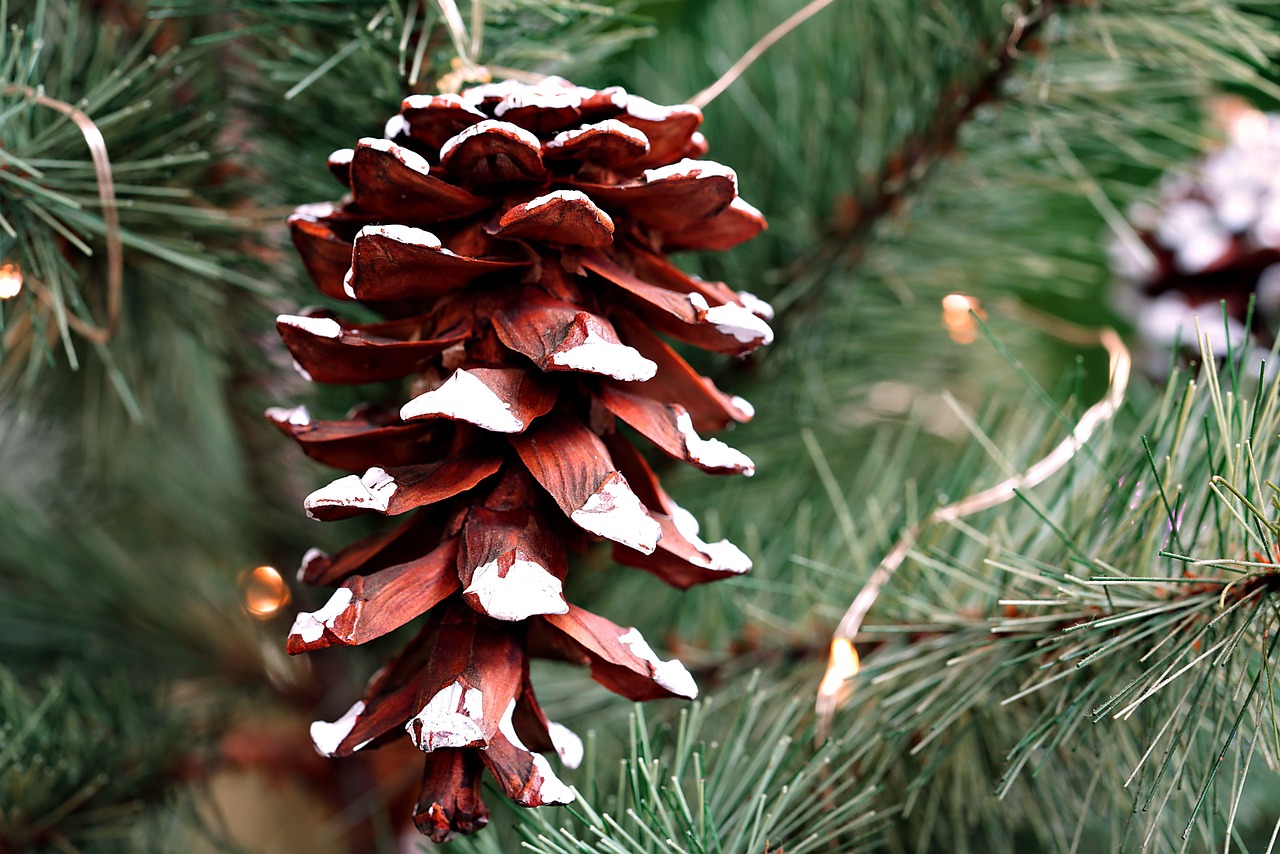Learn how to safely and effectively prune trees using the proven three-cut method. This technique minimizes bark damage, promotes faster healing, and encourages healthy growth. Mastering these precise steps ensures your trees remain robust, safe, and aesthetically pleasing, making your pruning efforts more successful and less risky.
Pruning is an essential practice for maintaining the health and appearance of trees. It helps to remove dead or diseased branches, encourages new growth, and shapes the tree for aesthetic purposes. Among various pruning techniques, the three-cut method stands out as an effective way to prune larger branches. This method is especially useful for minimizing stress on the tree while ensuring that the cut is made cleanly.

The three-cut method consists of three distinct steps, each designed to protect the tree’s bark and promote healing. This technique is particularly beneficial for larger branches, as improper cuts can lead to bark tearing and long-term damage. Understanding how to use this method effectively can greatly enhance your tree care practices.
Understanding the Three-Cut Method
The three-cut method involves a systematic approach to pruning that helps prevent injury to the tree. Each cut serves a specific purpose, and following the correct sequence is vital for the tree’s health. Here’s a breakdown of the steps involved:
- First Cut: The initial cut is made underneath the branch. This cut should be about one-third of the way through the branch. It prevents the bark from tearing when the branch falls.
- Second Cut: The second cut is made on top of the branch, slightly further out from the first cut. This cut will remove the weight of the branch and allow it to fall cleanly.
- Third Cut: The final cut is made just outside the branch collar. This collar is a swollen area where the branch meets the trunk. Cutting too close can damage the collar; cutting too far can leave a stub.
By following these steps, you ensure that your tree can heal faster and continue to grow strong. Additionally, using this method helps prevent injuries to yourself while pruning, as it allows for safer handling of larger branches.

When preparing to prune, it’s essential to gather the right tools. Using sharp, clean tools will make your cuts more precise and reduce the risk of spreading disease among your trees. Here are some common tools needed for tree pruning:
- Pruning Shears: Ideal for small branches.
- Loppers: Useful for cutting thicker branches.
- Saws: Necessary for larger limbs that cannot be handled with shears or loppers.
- Safety Gear: Gloves, goggles, and a hard hat are recommended for personal safety.
Before starting any pruning project, take a moment to assess the tree’s overall health. Look for signs of disease, insect infestations, or damage. Addressing these issues will help you determine which branches need to be removed.
It’s also important to consider the best time for pruning. Most trees benefit from pruning during their dormant season, typically in late winter or early spring. During this time, trees are less stressed, and wounds heal more quickly. However, some species may have specific requirements, so it’s advisable to research your particular tree type.

Pro-Tips and Mistakes I’ve Learned to Avoid
- When I first started, I underestimated the importance of sharp tools. Dull blades not only made cuts jagged but also increased the risk of bark tearing, which slowed healing. Always keep your tools sharp and clean for the best results.
- In my early days, I tried to remove too many branches at once. Over-pruning stressed the tree and sometimes caused it to produce excessive new growth that wasn’t healthy. I now prune purposefully and leave enough foliage for the tree’s health.
- At first, I neglected to identify the branch collar properly. Cutting too close to or into this swollen area delayed healing and increased the chance of disease. Learning to recognize the collar has made a big difference in my pruning success.
- I used to prune in the wrong season, especially during active growth periods. This led to sap loss and increased vulnerability. Now I stick to late winter or early spring, or follow the specific needs of each tree species.
- When I didn’t sterilize my tools, I accidentally spread diseases among my trees. Now I sterilize my tools with alcohol or bleach solution after each use, especially when pruning multiple trees.
- Initially, I cut too far from the branch collar, leaving stubs that attracted pests. I’ve learned to carefully make the final cut just outside the collar for optimal healing.
- Over time, I realized that understanding each tree’s specific needs and growth habit helps prevent common mistakes. Different species respond differently, and tailoring my approach yields healthier, better-looking trees.
- Finally, I used to ignore post-pruning care, like watering and mulching. Now, I make sure to support my trees’ recovery with proper aftercare, which leads to faster healing and stronger growth.
Benefits of the Three-Cut Method
The three-cut method offers several advantages that make it a preferred technique among arborists and gardeners alike. Here are some key benefits:
| Benefit | Description |
|---|---|
| Minimizes Bark Damage | This method reduces the risk of tearing bark, which can lead to decay and disease. |
| Promotes Healthy Growth | Proper cuts encourage new growth by allowing the tree to heal more effectively. |
| Improves Aesthetics | A well-pruned tree enhances landscaping and adds value to your property. |
| Increases Safety | Making clean cuts reduces the chance of injury to both the pruner and bystanders. |
Implementing the three-cut method in your pruning routine can significantly enhance your tree management skills. As you gain experience, you will become more proficient in identifying which branches need pruning and when to make those cuts.
In addition to these practical benefits, understanding how to prune effectively can lead to a deeper appreciation of your trees. Healthy trees not only contribute to your landscape but also provide numerous environmental benefits. They improve air quality, support wildlife, and contribute to soil health.

As you prepare to start pruning your trees using this method, remember that practice makes perfect. Take your time with each cut and observe how your trees respond over time. This hands-on experience will be invaluable as you develop your skills in tree care and maintenance.
Preparing for Pruning
Before you begin the actual pruning process, it is essential to prepare adequately. Proper preparation ensures not only your safety but also the health of the tree. Here are some steps to take before you start:
- Assess the Tree: Take a few moments to evaluate the overall health of the tree. Look for dead, diseased, or damaged branches that may need removal.
- Identify the Right Time: Pruning during the dormant season is ideal for most trees. This is typically late winter or early spring before new growth begins.
- Choose the Right Tools: Ensure your tools are clean and sharp. Dull tools can create jagged cuts that may not heal properly.
- Wear Protective Gear: Safety goggles, gloves, and a hard hat are crucial when pruning, especially when working with larger branches.
Taking these preparatory steps will help create a safer and more efficient pruning experience.
Understanding Tree Anatomy
To prune effectively, it is important to understand some basic anatomy of trees. Knowing how trees grow and heal can guide your pruning decisions. Here are key terms and their meanings:
| Term | Description |
|---|---|
| Branch Collar | The swollen area where a branch connects to the trunk; vital for healing. |
| Cambium Layer | A thin layer of cells just under the bark that helps the tree to heal and grow. |
| Leader | The main central stem of a tree that determines its height and shape. |
| Scaffold Branches | The main branches that support the tree’s structure. |
Understanding these terms will help you make informed decisions during the pruning process. Proper cuts near the branch collar promote quicker healing, while cuts made too close can cause damage and delay recovery.
Common Mistakes to Avoid
Even experienced pruners can make mistakes that may harm the tree. Here are some common pitfalls to be aware of:
- Over-Pruning: Removing too many branches can stress the tree and hinder its growth. Always prune with purpose.
- Poor Timing: Pruning during active growth can lead to excessive sap loss, which may weaken the tree.
- Ignoring Tree Species: Different tree species have varying needs. Researching specific requirements can prevent mistakes.
- Leaving Stubs: Cutting too far from the trunk can leave stubs, which may attract pests or diseases.
Avoiding these mistakes will contribute to healthier trees and a more successful pruning experience.
Seasonal Considerations for Pruning
The season in which you choose to prune can significantly impact your tree’s health and growth. Here’s how seasonal timing influences pruning:
Winter Pruning
Winter is often regarded as the best time for pruning most deciduous trees. During this period, trees are dormant, making it easier to see their structure without leaves. Benefits of winter pruning include:
- Minimal sap loss, allowing for quicker healing.
- Easier visibility of the tree structure to identify necessary cuts.
- Avoids the risk of infection from pests and diseases that are more active in warmer months.
Spring Pruning
Spring is also a suitable time for certain types of trees, especially those that bloom later in the season. However, be cautious with early bloomers. Key points about spring pruning include:
- Best for trees that flower later in the season, as they have already set their buds.
- Pest activity may increase, so be vigilant for potential infestations.
Summer and Fall Pruning
Pruning during summer or fall can be beneficial in specific situations, particularly for shaping purposes or removing dead wood. However, it is generally not advisable for heavy cuts. Consider these factors:
- Summer pruning can help reduce the size of overly vigorous trees but should be done sparingly.
- Fall pruning may expose trees to winter weather stress; avoid it unless necessary.
Each season presents unique opportunities and challenges for pruning. Understanding these seasonal effects will help you make better decisions regarding your tree care practices.
Caring for Your Tools
Maintaining your pruning tools is essential for effective tree care. Clean and well-maintained tools not only make your job easier but also help prevent disease spread among plants. Here are some tips for caring for your tools:
- Clean After Use: Wipe down tools with a cloth or sponge after each use to remove sap and debris.
- Sterilize: Use a solution of one part bleach to nine parts water or rubbing alcohol to sterilize blades before and after use.
- Sharpen Regularly: Keep blades sharp to ensure clean cuts. This reduces stress on both the tools and the tree.
- Store Properly: Hang or store tools in a dry place to prevent rusting and damage.
By taking care of your tools, you ensure a safer and more efficient pruning experience while promoting the health of your trees.
Executing the Three-Cut Method
Now that you are prepared and understand the anatomy of trees, it is time to execute the three-cut method effectively. This section will guide you through each step in detail, ensuring that you prune with confidence and skill.
Step-by-Step Guide
The three-cut method is designed to minimize damage to the tree while ensuring a clean cut. Here’s a detailed breakdown of each step:
- First Cut (Undercut): Start by making a notch cut on the underside of the branch. Position this cut about 12 to 18 inches from where the branch meets the trunk. Cut about one-third of the way through the branch. This cut prevents the bark from tearing as the branch falls.
- Second Cut (Top Cut): Move to the top of the branch, approximately 1 to 2 inches further out from your first cut. Make a clean cut through the remaining wood until the branch falls away. This cut should be smooth and swift, allowing for a clean break.
- Third Cut (Final Cut): Identify the branch collar, which is the swollen area where the branch connects to the trunk. Make your final cut just outside this collar, ensuring not to cut into it. This allows the tree to heal properly.
Following these steps carefully will help ensure that your tree remains healthy while also achieving your desired shape or size.
Visualizing the Process
Sometimes, seeing the process in action can enhance understanding. Although this article cannot provide images, here is a description of what each cut looks like:
- The first cut creates a small notch that resembles a “V” shape on the underside of the branch.
- The second cut removes most of the weight from the branch, allowing it to fall cleanly.
- The final cut should leave a smooth edge just outside the branch collar, resembling a small bump where the collar was left intact.
Visualizing these cuts can prepare you for what to expect during your pruning sessions.
Pruning Different Types of Trees
Different tree species may require specific approaches when using the three-cut method. Understanding these variations will help you tailor your pruning techniques accordingly.
Deciduous Trees
Deciduous trees, which lose their leaves in winter, generally benefit from pruning during their dormant season. Here are some considerations:
- Focus on removing dead or crossing branches.
- Aim to maintain a balanced structure by keeping the central leader intact.
- Be cautious with flowering species, as pruning too late may remove new buds.
Evergreen Trees
Evergreens retain their foliage year-round and have different pruning needs:
- Prune lightly in late spring or early summer to maintain shape.
- Avoid heavy pruning, as it may expose inner branches that are not accustomed to sunlight.
- For damaged branches, use the three-cut method at any time of year as needed.
Fruit Trees
Fruit trees have unique requirements for pruning to ensure healthy fruit production:
- Prune during late winter or early spring before new growth.
- Focus on shaping the tree for better sunlight exposure and airflow.
- Remove suckers and watersprouts to direct energy into fruit-bearing branches.
By understanding how different types of trees respond to pruning, you can ensure healthier growth and better fruit production.
Post-Pruning Care
After completing your pruning tasks, it’s essential to care for your trees properly. This will promote healing and encourage healthy growth:
- Watering: Ensure your trees receive adequate water, especially during dry spells following pruning.
- Mulching: Apply mulch around the base of the tree to retain moisture and suppress weeds.
- Monitoring: Keep an eye on your trees for signs of stress or disease after pruning. Early detection is key to treatment.
Tools for Specialized Pruning
While basic tools are essential for general pruning, certain situations may require specialized equipment. Here are some tools that can enhance your pruning efforts:
- Pole Pruner: Useful for reaching high branches without needing a ladder.
- Hand Saw: Ideal for larger branches that cannot be handled by loppers.
- Pruning Knife: Helpful for making precise cuts on smaller branches or shaping young trees.
Selecting the right tools for specific tasks can lead to more efficient and effective pruning sessions.
Avoiding Tree Diseases After Pruning
Trees can be vulnerable to diseases after pruning, especially if cuts are not made properly or if tools are contaminated. To mitigate these risks:
- Sterilize Tools: Always clean and sterilize your tools before and after use to prevent disease transmission.
- Avoid Pruning Wet Trees: Pruning during rainy periods can increase the risk of fungal infections.
- Seal Large Cuts: For larger cuts, consider using a tree wound dressing or sealant to protect against pests and diseases.
Taking these precautions will help maintain tree health and promote vigorous growth after pruning activities.
Understanding the Impact of Pruning on Tree Health
Pruning is not just a cosmetic practice; it plays a critical role in maintaining the overall health and vitality of trees. Understanding the long-term impact of pruning can help you make better decisions for your trees. Here are several factors to consider:
- Improved Air Circulation: Pruning helps to thin out dense foliage, allowing better air circulation. This reduces humidity levels around the tree, minimizing the risk of fungal diseases.
- Enhanced Light Penetration: By removing excess branches, more sunlight can reach the inner parts of the tree and the surrounding landscape. This promotes healthy growth throughout the tree.
- Stronger Structural Integrity: Regular pruning contributes to a well-balanced tree structure. This reduces the likelihood of breakage during storms and high winds.
- Increased Fruit Production: For fruit-bearing trees, proper pruning techniques, including the three-cut method, lead to improved fruit yield and quality.
Recognizing these benefits reinforces the importance of proper pruning techniques and highlights the value they bring to your trees and landscape.
Common Questions About Pruning
As you become more familiar with pruning techniques, you may have questions about specific scenarios or techniques. Here are some frequently asked questions regarding tree pruning:
How often should I prune my trees?
The frequency of pruning depends on the species and age of the tree. Generally, younger trees benefit from annual pruning to establish a strong structure. Mature trees may require less frequent trimming, typically every 3 to 5 years.
Can I prune in any season?
While late winter and early spring are ideal for most trees, some species may have specific pruning times. Researching your tree type will help you determine the best timing.
What should I do with the cut branches?
Cuts can be chipped into mulch, added to a compost pile, or disposed of according to local regulations. Avoid leaving large branches on the ground, as they can harbor pests and diseases.
Is it necessary to use a wound sealant?
In most cases, it is not necessary to use a wound sealant. Trees have their own mechanisms for healing cuts. However, larger cuts may benefit from a sealant to protect against pests and diseases.
Pruning Resources and Further Learning
As you continue your journey in tree care, consider utilizing various resources for further learning:
- Local Arborist Associations: Many regions have professional organizations offering workshops and seminars on tree care.
- Extension Services: Your local agricultural extension service can provide valuable information tailored to your climate and tree species.
- Books and Online Courses: Numerous books and online courses focus on horticulture and arboriculture. These resources can help deepen your understanding of tree care practices.
Taking advantage of these resources will enhance your knowledge and skills, allowing you to care for your trees more effectively.
Final Thoughts
The three-cut method is an invaluable technique for pruning trees that promotes health and longevity. By understanding the fundamentals of pruning, preparing adequately, and executing each cut with care, you can ensure that your trees thrive. Emphasizing safety, tool maintenance, and disease prevention further enhances your effectiveness as a pruner.
Remember that each tree is unique, and taking the time to learn about its specific needs will lead to better outcomes. As you practice and refine your skills, you will develop a deeper appreciation for these living organisms that contribute so much to our environment.
Caring for trees is a rewarding endeavor that offers both aesthetic and ecological benefits. By following the guidelines outlined in this article, you can confidently approach pruning with the three-cut method and enjoy the beauty and benefits that healthy trees provide.
